Crossing Honduras (without stopping…)
It was time to go to El Salvador! Yes, after a bit of to-ing and fro-ing and wondering how dangerous it actually was, we decided that we ought to go. The next step was to work out how to actually get there, as there isn’t actually a border between the two countries – there is the small matter of Honduras being in the way. So, why weren’t we going to Honduras next then? Well, the part of Honduras that we wanted to visit was in the west of Honduras, and so not on the way AT ALL! However you looked at it, the borders were in an inconvenient place.
Our original plan had been to take a tourist shuttle/boat/tour service to get to El Salvador. Although there is no land border between Nicaragua and El Salvador, there is a border in the Gulf of Fonseca, which means that you can go by boat between the two countries. It takes all day and you get a kind of cruise on the gulf – it sounded like a nice relaxing trip. 🙂 However, because of the troubles in Nicaragua there weren’t enough tourists for this service to run, and a private service would cost too much for us to justify it – so we were back to a choice between a land tourist shuttle and public transport. The tourist door-to-door shuttle left at 2am and went straight to a beach resort on the coast of El Salvador… yep, that’s not when or where we wanted to go… public transport it was…
You might be wondering why we were even considering not using public transport for this journey… it’s because backpackers are soft nowadays 🙂 and actually very few people do it this way – so it’s quite hard to find information about how to do it. Also, it’s not generally a good idea to be wandering around in El Salvador after dark with big backpacks on… so we wanted to be sure that we could get there before it went dark.
The journey goes as follows:
- Bus from Leon to Chinandega
- Bus from Chinandega to Guasale (Honduras border)
- Exit Nicaragua, walk across the border, enter Honduras
- Colectivo that leaves when full from Guasale to El Amatillo (El Salvador border)
- Exit Honduras, walk across the border, enter El Salvador
- Bus to Santa Rosa de Lima
- Bus to San Miguel
Yes, that’s FIVE buses and two border crossings… this was going to be the pinnacle of our border crossing achievements! 🙂
So, off we went bright and early at 7am to the bus station in Leon where we found our first bus – in this case it wasn’t actually a bus, but a mini-van that leaves when full. We had heard that even if you have to wait a bit, the mini-vans are much faster than the regular buses. This van didn’t have a roof rack and so we had to pay for a seat to store our rucksacks on… ah well, at least the van was nearly full and so once we boarded we left almost immediately 🙂 By 7.25am we were zooming down the highway to Chinandega.

Less than an hour later we were getting off the mini-van at Chinandega bus station, and it didn’t take us too long to locate the area where the transport to the border departed from. After only around 15 minutes we were on our next mini-van, this time with our bags tied to the roof – so far so good!


After another hour or so, we were at the border! Yes, we were on a roll… but how long could it last…
The border area was a bit of a sprawling construction site, as they were apparently building a new highway or something. After we got off the bus we were swamped by people offering us cycle-taxis to take us over the border. It was apparently 3km… but more like 1km in reality, so we decided to walk.
We found the Nicaraguan border control building and paid our exit fee and they gave us some pieces of paper which we didn’t realise were for customs officers. This meant that we walked all the way to the ‘exit’ of Nicaragua and got turned back because customs had not stamped our piece of paper. Yes, it turned out that you had to go into a special building and put your bags through an x-ray machine. So back we went to put our bags through the machine. This meant that the customs officer stamped our piece of paper, and when we went back to the Nicaragua ‘exit’, the policeman let us out. YES! We were finally out of Nicaragua – it had taken longer than expected…
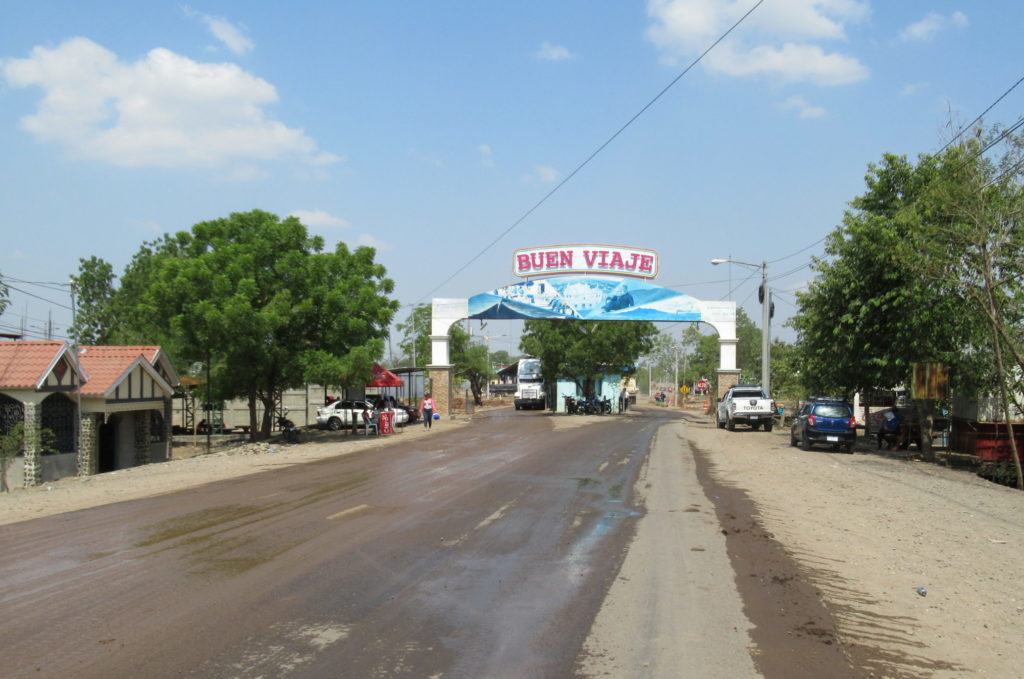
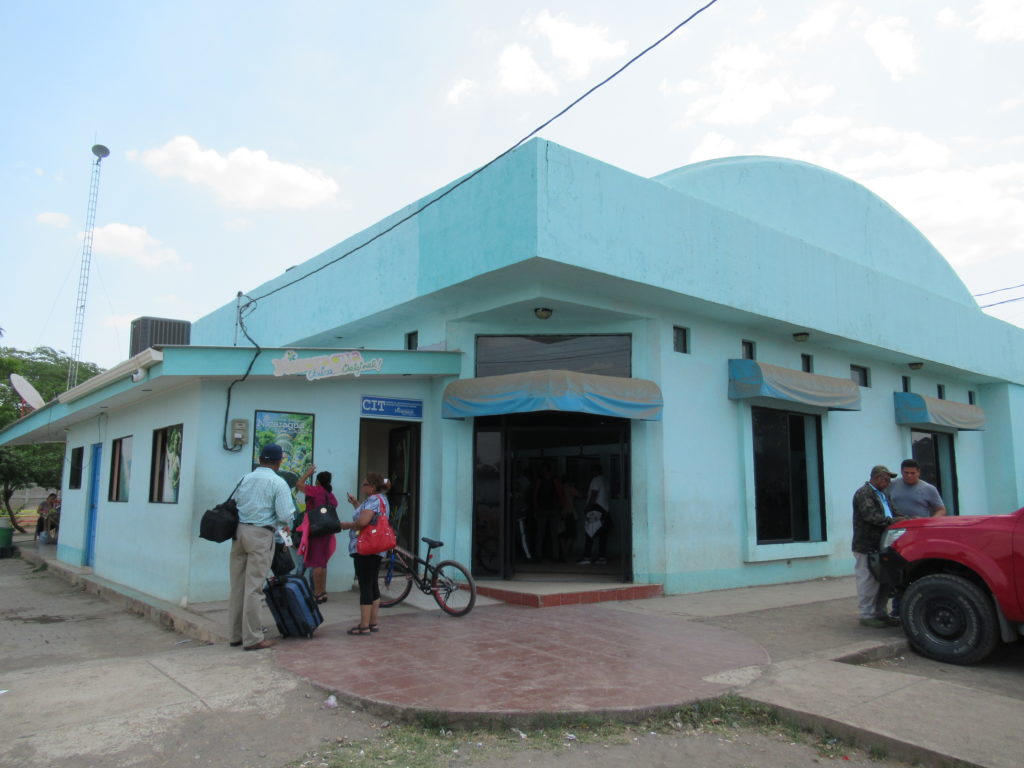
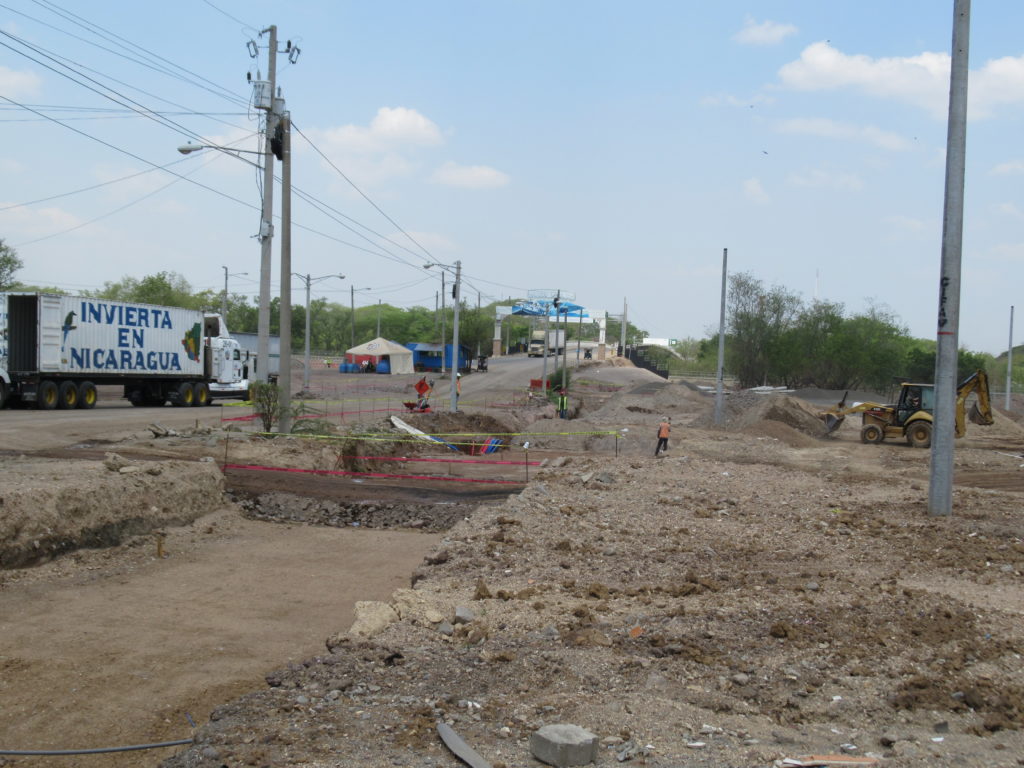
After officially leaving Nicaragua we arrived at a bridge which welcomed us into Honduras. All we had to do now was find the Honduras immigration building.

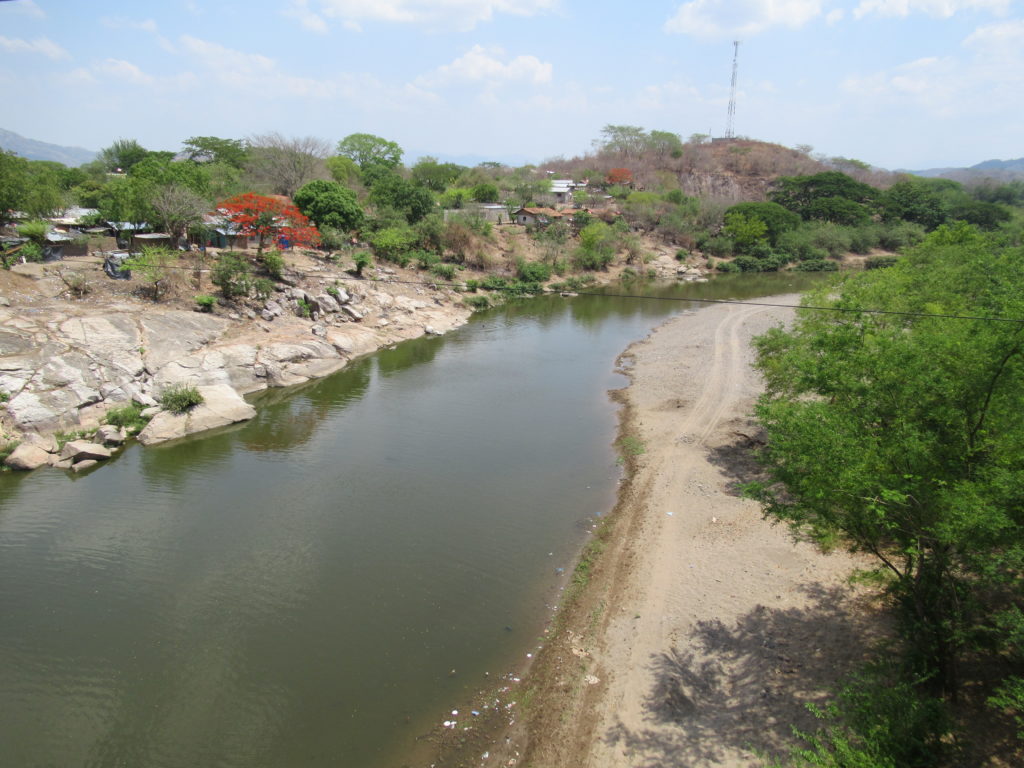
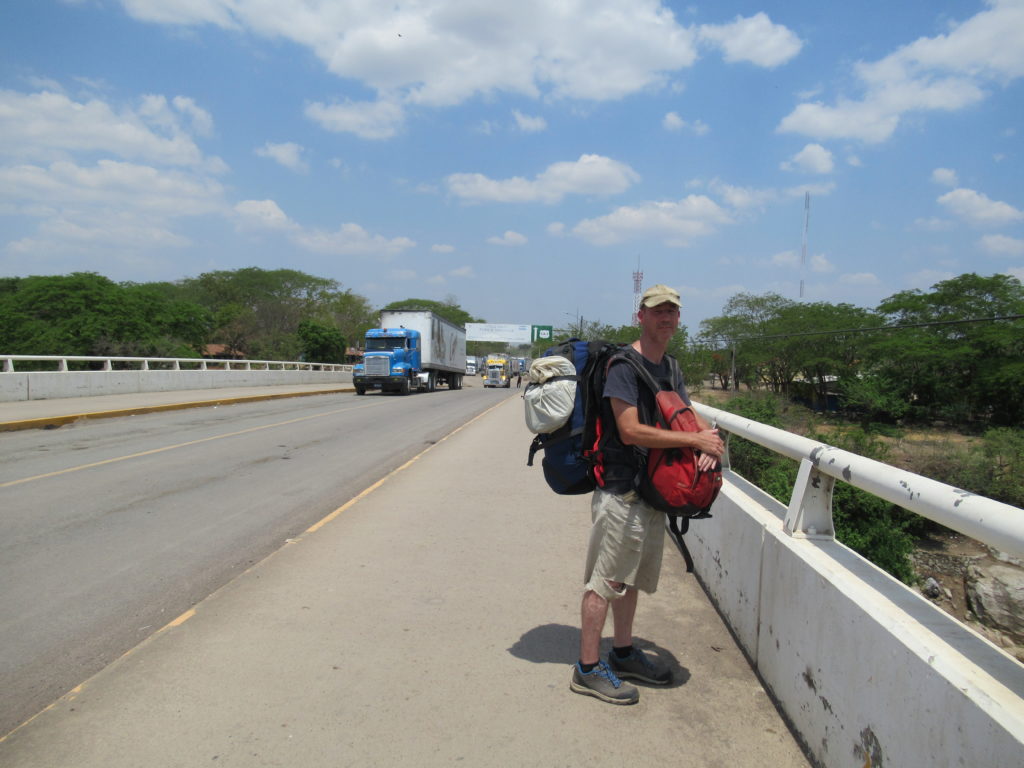

The Honduras immigration office was very high-tech compared to previous countries – they had an electronic fingerprint scanner and they took our fingerprints and also a photo. Yes, there would be no hiding in Honduras that’s for sure…
The immigration officers were extremely friendly, and it was very quiet. We paid our $3 USD entrance fee and then we were on our way again. Despite the border delays it was still only 11am and we went in search of the mini-van across Honduras. Supposedly it left from a parking area next to Pollolandia – a chicken fast-food chain.
As we walked out into the wilderness of Honduras, it was a bit of a shock as to how rough it looked. There was no town here – this was a forgotten and forlorn corner of Honduras with just the chicken shop, a small grocery store, and lots of abandoned buildings and rubbish. The bus departure area turned out to be a wasteland of old buildings, rubbish, and burnt-out cars…
But on the plus side, there was a mini-van waiting there! On the minus side there were only 3 people already there… and the bus departed when it was full – which was 14 people. There was no town here, so the only new additions would be other people crossing from Nicaragua. It didn’t look very hopeful.
CC asked if there was a toilet, which caused everybody to start laughing… “Yes, there’s an ‘outside’ toilet”, came the reply. More laughing followed and gestures were made towards the pile of burnt cars at the back of the parking area… yes, CC did have to wee behind a pile of burnt cars at the back of a rubbish-filled parking area… 🙂
After an hour of waiting – and wondering what kind of a stupid idea led us to be in the middle of nowhere in Honduras – no new people had arrived. We were starting to get a bit worried about not making it to El Salvador before it got dark, or even not making it at all?!? Then two more people showed up – we were now 7 people. We couldn’t imagine any way that we would get to 14 people – and were starting to get even more worried. This parking area was not a place that we would be forgetting in a hurry…
Then suddenly another mini-van appeared. It was the van coming from the El Salvador border in the other direction. Apparently it was over four hours late… To cut a long story short, there were violent protests in Honduras that day, and lots of roads had been closed or blocked. The mini-van had been on a very long detour. The owner of the van company now had to decide whether to cut his losses and run the van now when it was half full – or risk it not going at all, as the protests were due to get worse that afternoon. For a while we thought we might be heading back to Nicaragua….
Finally, the owner decided that the van was going to run, and the seven of us piled on board – thankful to be getting out of this wasteland at last. We had been there for around two hours, so we still had a chance to get to El Salvador before dark.

So we were off at last! However, the troubles of the day were not over yet… as we approached the outskirts of Choluteca – the largest city in this part of Honduras, a driver leaned out of a window of another mini-van and told our driver that the bridge out of town was blocked by burning tyres and protesters. Even worse, he said that they were ‘robbing everybody’?! This alarmed us to say the least – particularly as the driver looked extremely alarmed and agitated to hear this news…
We had a bit of luck on our side, as one of the passengers was actually from this part of Honduras and was using the mini-van to go part of the way to get to his house. He had local knowledge and knew another way out of town. He made enquiries as to whether this way was blocked… ‘not yet, we think…’.
As we navigated the random streets of Choluteca, the atmosphere in the van became a little bit tense. Nobody wanted to be stuck in Choluteca, and nobody wanted to be robbed by an angry mob of protesters… 🙁
We were pretty nervous for much of the next hour, and could not relax until we were a long way from Choluteca, and had worked out that there was pretty much nothing between us and the border except countryside. Once we were out of the danger zone, the local guy from Honduras started chatting to us. It turned out that he thought we were missionaries – as they were the only gringos that he had ever come across in this part of Honduras!
Along the way we were stopped several times by the army and police who boarded the bus and asked for everybody’s passports. Anybody who was Nicaraguan (which was everybody on the bus except for us and the local) had to get off the bus with all their luggage and go into a building to be processed and checked in some way.

By the time we got to the border with El Salvador, even though it was getting pretty late and we probably wouldn’t get to San Miguel before it went dark – we were so relieved to be safely out of Honduras that we were on a bit of high! 🙂
It was 3.15pm when we arrived, and it was a very pleasant, quiet border. Both sets of immigration officials were very friendly, and it was only a short walk between the two buildings. The lady from El Salvador immigration was very happy that we were not just driving straight through to Guatemala, and gave us a tourist map of El Salvador! 🙂
El Salvador, Nicaragua, Honduras, and Guatemala are part of a reciprocal visa scheme, which means in theory that you get a ‘CA4‘ visa on entry which is valid for all four countries. It says: Foreign nationals who enter one of the signatory countries can also travel to other signatory states by land (but not by air) without having to obtain additional permits or to undergo checks at border checkpoints.
Well, in practice it is NOTHING like that – each country, and even each border does its own thing and generally ignores the rules?! Some will stamp you in again and add extra time on the visa, some will stamp you in but not add extra time. Some will accept the stamps from other countries, some will not… Anyway, El Salvador followed the rules and just let us in?!? The reason I mention this, is that El Salvador turned out to be the only country on this whole trip that did not stamp our passports….


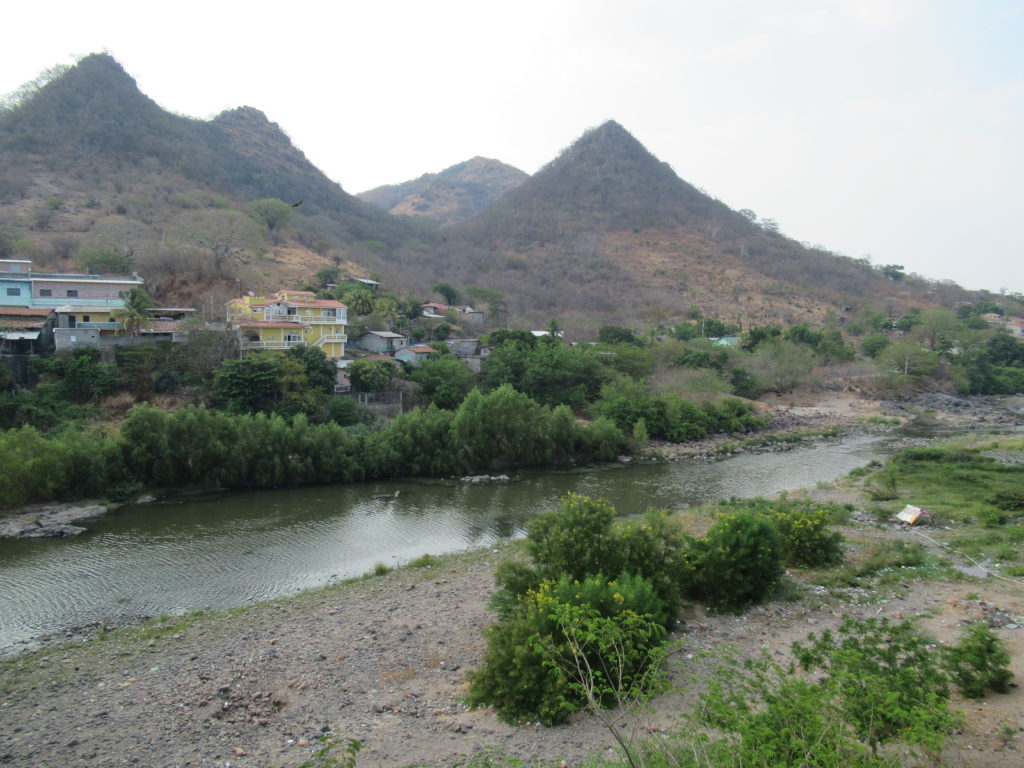
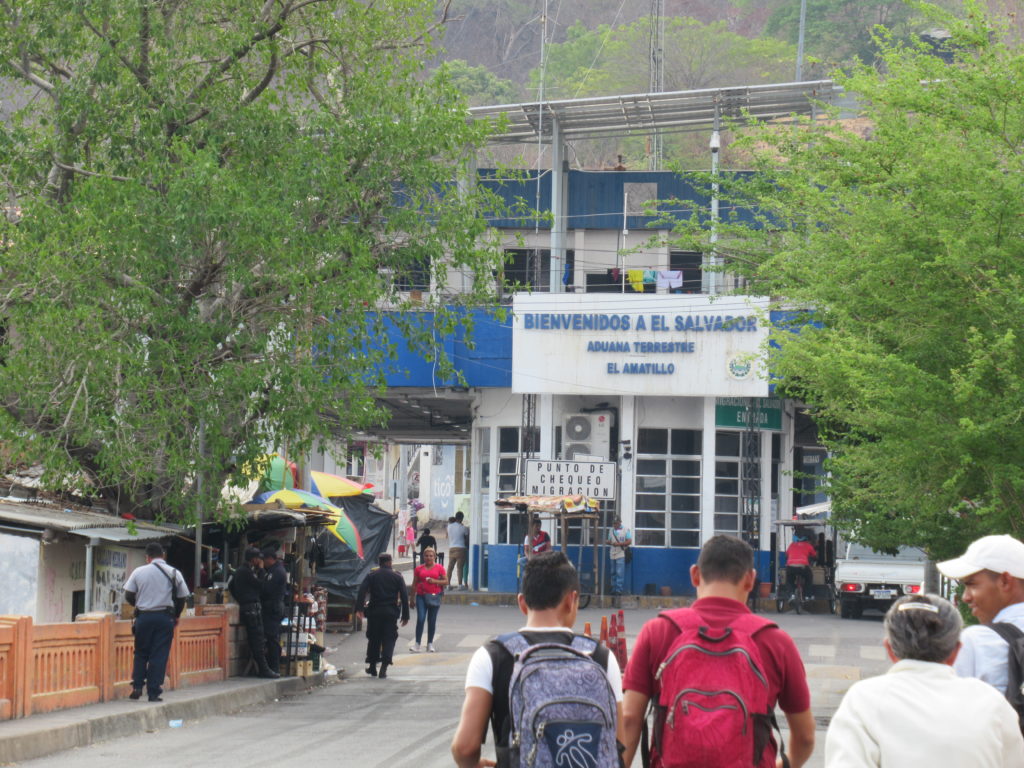
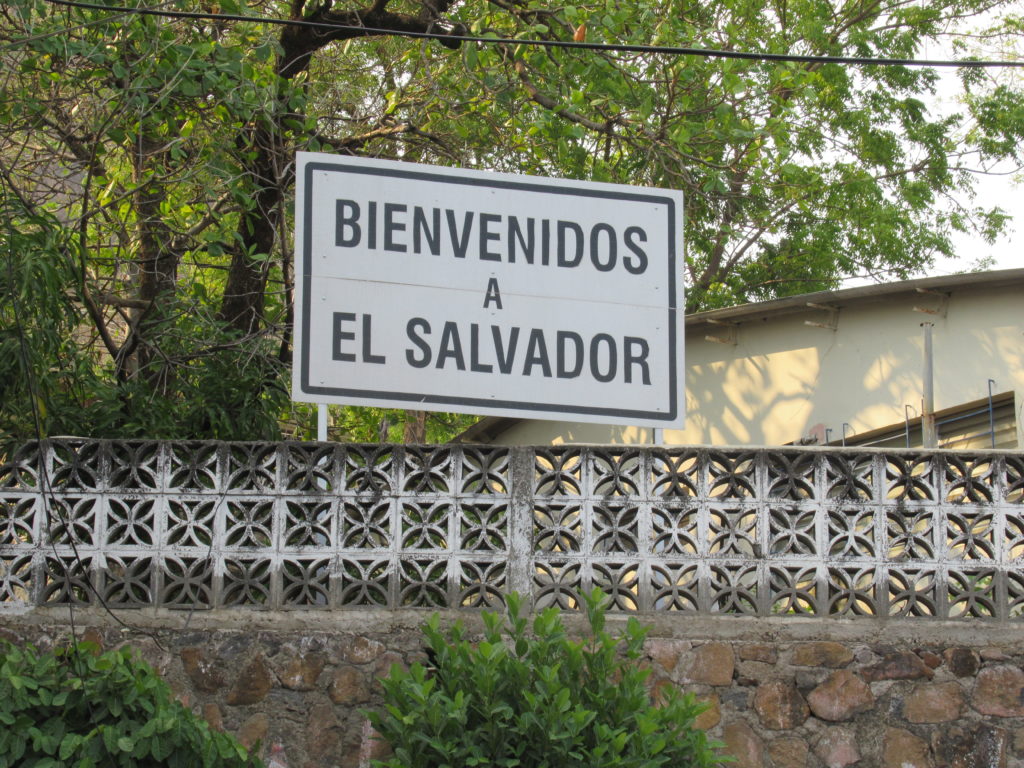
It had felt like a marathon journey already, but we still had a short way to go. We arrived at the other side of the border control and found ourselves in a tiny village. It was deserted except for two teenagers sitting on bench. They stared at us – presumably wondering where we had come from. This was to become a common theme in parts of El Salvador – tourists are very thin on the ground in most parts.
We asked them where we could get a bus to San Miguel, and they pointed to the end of the road. As we were heading that way, a bus arrived and started turning around to leave again. We ran towards it in a panic. We had no idea if this was the last bus or not, but buses in El Salvador usually stop at around 5pm – as they don’t run when it’s dark for security reasons. We weren’t taking any chances – we wanted to be on that bus!
The bus turned out to be going to Santa Rosa de Lima, which was the nearest small town – but the conductor said that we could change there for a San Miguel bus. The mini-vans were now a thing of the past, and this was a normal, full-size, fairly pleasant and comfortable bus! 🙂
After 45 minutes the bus pulled up at the side of the road in Santa Rosa. Another bus pulled up behind it. Ourselves and a few others got off the bus and got on the new one. We had done it! We were on our last bus of the day! 🙂 It took another hour to get to our final destination, which was San Miguel. We arrived at around 5.30pm.
It had taken 11 hours, 4 border checkpoints, 3 mini-vans, and 2 buses – but we had finally made it just before nightfall! 🙂 🙂 This was a journey that we wouldn’t be forgetting in a hurry…!
